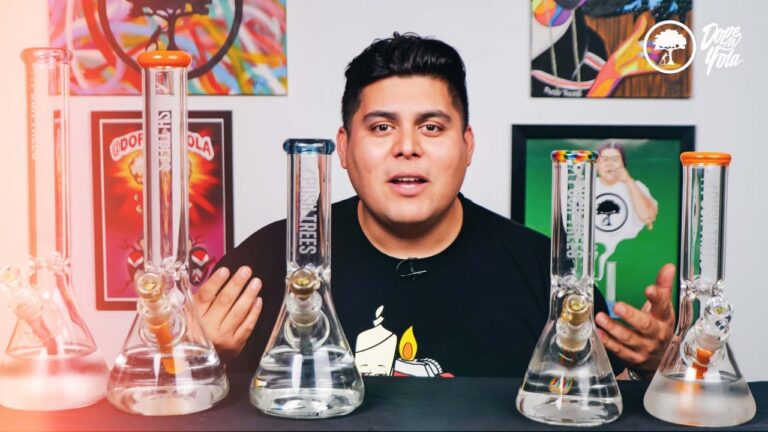Visit our sponsor https://aura.com/coldfusion to get started on a 2-week free trial and see where your personal information is being sold online.
Microplastics aren’t talked about a lot, but they could potentially be the largest health crisis of our future. So how bad is it and what can be done?
Sources: https://docs.google.com/document/d/1SIT4EX_i3RQY-h6mnRptLeCeWgiv8bT2PqGaRljWksw/edit?usp=drivesdk
ColdFusion Music:
https://www.youtube.com/@ColdFusionmusic
http://burnwater.bandcamp.com
Get my book:
http://bit.ly/NewThinkingbook
ColdFusion Socials:
https://discord.gg/coldfusion
https://facebook.com/ColdFusionTV
https://twitter.com/ColdFusion_TV
https://instagram.com/coldfusiontv
source
About Post Author
ColdFusion
Average Rating
39 thoughts on “How Microplastics Slowly Make Their Way Inside Us”
Comments are closed.
More Stories
Inside Bay Area’s Ruthless Afghan Street Gang
Tickets for My Live Event: https://www.eventbrite.com/e/tommy-g-presents-tickets-793704229717?aff=oddtdtcreator Merch: ... source
AI Deception: How Tech Companies Are Fooling Us
Visit our sponsor https://aura.com/coldfusion to get started on a 2-week free trial and see where your personal information is being...
Did She Deserve To Get Fired?
Second Channel: https://www.youtube.com/channel/UClTjur-9cx8Bb4MW8r0K6xw Spotify: https://spoti.fi/439TpHT Patreon: https://www.patreon.com/audittheaudit Twitter: https://twitter.com/AuditTheAudit Submit your videos here: [email protected] Sponsorship inquiries: [email protected] Welcome to Audit...
Mall Restaurants That Have Disappeared!
Over the years, many of us have grown to love some of the restaurants that are in mall food courts....
World’s Deadliest Laser Maze!
I can’t believe what happened at the end… Drink PRIME Hydration, now at Walmart, Target, 7-Eleven, and Kroger Family Stores....




Already started avoiding plastics & friendly with nature
Excellent analysis
Meanwhile me drinking water from a plastic water bottle rn and watching this video.💀
They should be studying prison inmates in America. Everything they use is plastic. They cook Their food in microwaves in plastic bowls. Utensils, cooking wares, cups. It's all plastic now. Inmates would be a perfect test study.
I like the back ground music…
"the party that is consumerism"
Tupperware… Or… TV's 'Eerie, Indiana' 1991 episode, where children stayed YOUNG in 'ForeverWare' when a Mother sealed her kids in bed sized 'ForeverWare tubs to sleep in during the night… 😏🤣🤣🤣
😎🇬🇧
Just started video so not sure if this is mentione dbut there have been studies suggesting that microplastics are behind our testosterone levels plummeting
i can say that it is really true about Philippines
just another angle on how self destructive we are.
The Phillipines comment is basically fake news. They have the most plastic because most western countries recycled plastic is just sent there
This is why this is one of the best journalistic channels on the internet! Details, no false conclusions, neutral and informative.
There's easy ways to reduce plastic: if you go to the local market, bring your own glass container for food they normally put into plastic containers. Used the same 4 glass containers for the last 5 years
would love to see the video about the plastic recycling industry!
another thing that i read that makes it even more difficult to do research on them is the fact that ALL of us exposed to plastics in some form. its almost impossible to find a control group.
Good message, but sometimes your script seems AI generated. 😁
It's not Philippine's trash it's China's and all south east Asian nation. It's the ocean current gathering them towards the Philippines
So how can avoid microplastic?
As a Filipino, this is literally concerning.
i hope one day comes when we will try to find solutions to help other species and the planet instead of finding solutions only when it starts bothering us Humans.
it's been a big issue since 20years for the WHOLE ocean and marine animals and now we try to tackle the issue just because it is harmful for us.
Oil companies are planning to offset their losses in using oil for energy by exploding the amount of plastic produced. They will find ways to get that plastic into products and services so that they can continue to make money.
first world problems with no solution as usual
It's a credit cards worth of plastic a year not a week. Fear mongoose.
More man made materials on earth than biological materials? 🤨🤨🤨 15:56
do a video about emerging white clots phenomenon
There's talk about colon cancer being a big threat amongst youth
this is definitely an issue that's being ignored by everyone that matters.
If biodegradable plastics can decompose in our bodies, are those endproduct chemicals safe or toxic?
I am studying microplastics, and my area of expertise is how different kinds of plastics break down even smaller in the environment but in my research group there are ongoing experiments of the toxicity as well. I do have a couple important notes about the video. Plastic itself is not dangerous. It is polymere, which implies the structure of molecules and polymers are everywhere naturally. The danger is in the additives in plastic products (like the PBA). Most of the plastics from the environment go right through our bodies, there has been studies of that, but some, the smallest ones called nanoplastics, could go inside our cells for example. That could do physical harm in theory. However the actual health concern is the chemicals. For that reason biodegradable plastics are not the answer!! They contain all the same additives or even more than the regular plastic products.
This is a complicated subject. There are some good points to using biodegradable plastics in the future, but implying that to be a solution for the health risks is simply misleading. Also regular plastics do break down completely as well, some even surprisingly fast and oceans are not our only problem. There are estimated 4 times more microplastics in the soil.
Overall the video was on point mostly and I do appreciate the focus on the topic. I just think it is important to understand that plastic itself is mostly carbon, it is “natural”, but the chemicals make the danger and at this point biodegradable plastics are mostly greenwashing.
Very important topic! Thank you for talking about it
Remember. It's your fault for the environment being messed up and not the corporations that created the products and made billions off of it.
Here's a ChatGPT summary:
– A silent killer emerges every generation, threatening the environment and humanity, with microplastics being the current concern.
– Media headlines suggest we may consume a credit card's worth of plastic per week.
– The World Health Organization and US government scientists warn about plastics in drinking water and the food chain.
– Microplastics are plastics less than five millimeters in diameter and come in two types: primary (deliberately created) and secondary (from breakdown of larger plastics).
– Plastic is a tough material that nature can't effectively break down, leading to persistent environmental contamination.
– The plastic revolution began with the search for durable materials for snooker balls, leading to the creation of synthetic polymers and the explosion of plastic production during World War II.
– Post-war, plastic manufacturing capacity was redirected to consumer products, leading to widespread use and waste.
– Microplastics have infiltrated every corner of the world, posing dangers to aquatic life and acting as carriers for harmful chemicals.
– Microplastics enter the food chain, starting with plankton and moving up to the food we eat.
– Main exposure routes for humans are indoor inhalation and drinking from plastic bottles.
– Studies found microplastics in human lungs and blood, with concerns about their ability to penetrate biological barriers.
– Consumption estimates of microplastics vary, with some studies suggesting a few micrograms weekly.
– Health implications of microplastics are uncertain, with concerns about inflammation, cancer, and endocrine disruption.
– Animal studies show potential risks to reproductive health and tissue accumulation, but human health impacts are less clear.
– Research faces challenges due to the complexity of plastic chemicals, the difficulty of measuring human health impacts, and the scarcity of hard evidence.
– BPA, an industrial chemical in plastics, is linked to potential health issues, but the FDA states it is safe at low levels.
– Plastic remains useful in healthcare, food distribution, and textiles, but safer alternatives are needed.
– Biodegradable plastics like PHA exist but are more expensive than conventional plastics.
– Efforts to reduce microplastics include bans on microbeads, microfiber filters in washing machines, and reducing single-use plastics.
– Solutions involve policy and behavioral measures, such as educating consumers, encouraging product returns, and promoting a circular economy.
– The risks of microplastics may not be widespread yet, but there is a consensus that it's a matter of when, not if.
– In 2020, 367 million metric tons of plastics were produced, with projections to triple by 2050.
– The issue of microplastics is not just environmental but also a potential health risk for everyone.
– The video encourages awareness and action to reduce microplastic pollution.
– Main message: Microplastics pose a growing environmental and health concern, with the need for increased awareness, research, and action to mitigate their impact on humanity and the planet.
Big companies just won't stop ad gov hmmm
Environmental mambo jambo….
Let's be honest, we need to stop the consumerism mentality.
And still we are happy moving towards wind turbines as our major supplier of energy – then the decay of the blades isnt a issue to be adressed
Yep! It’s over.
Nobody’s ever died from exposure to micro plastics. They’ve died from heart disease, smoking alcohol car, accidents drug use let’s get real here. No autopsy has been ever performed where somebody has actually died from minor exposure to micro plastics in the environment.
… I'm just playing games
I know that's plastic love
Dance to the plastic beat
Another morning comes
My cat recently had a major health crash. Turns out, that more and more cats have thyroid issues around the age of 11/12. There's studies that link thyroid issues in house cats (specifically!) to certain microplastics. Cats get the same hormones as treatment as humans. No, it's not proof, but it's sure quite a hint.